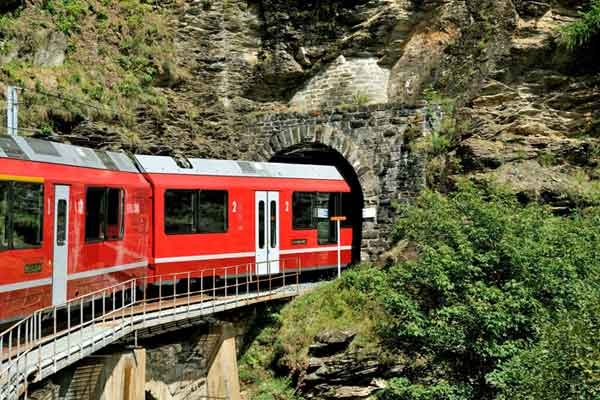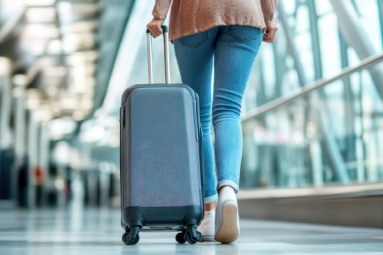
(Image source from: Canva.com)
Have you ever seen how a train slows down just before entering a tunnel or crossing a bridge? The noise from the wheels quiets, conversations lessen, and for a brief moment, everyone looks outside – a mix of curiosity and alertness. This may seem ordinary, but it's not just by chance. Those moments of deceleration are part of a carefully planned safety routine that occurs on India's railway lines every day. Engineers, physics, and years of travel experience contribute to why trains do not speed through these areas. Here’s why that brief pause is more important than you realize:
Every bridge and tunnel is built to hold a certain amount of weight. When a train slows down, its weight is distributed more evenly over the structure, which decreases stress on the joints, columns, and connections. A train moving quickly can create high forces that can strain older or smaller bridges. By controlling the speed, engineers guarantee that bridges stay safe and functional, even those that have been used for more than one hundred years. When a train goes through a tunnel or over a bridge, the air pressure changes quickly. At high speeds, these changes can cause vibrations or turbulence that might disturb passenger comfort or compromise the structure's stability. Slowing down allows the pressure to settle gradually. In long or narrow tunnels, this also stops sudden air movements that could dislodge debris or disrupt the train’s balance. This leads to a safer and more pleasant crossing through both enclosed and open areas.
Bridges and tunnels often have tight bends, steep slopes, or dim lighting that can make it hard to see. In these places, slowing down gives the driver better control and extra time to respond to signals, workers, or unplanned obstacles. In India, where monsoon rains, fog, or dust can make viewing conditions worse, this precaution is critical. Today's trains also use automatic systems to help keep safe speeds when visibility is low — but reducing speed is still a vital safety measure by the train operators. Bridges expand and shrink with temperature variations, and tracks are designed with “expansion gaps” to accommodate these shifts. If a train goes too fast, it can put extra pressure on these joints, leading to misalignment or damage. Slowing down allows the wheels to move over these gaps without issue and stops pressure from building up. This step is especially important for metal bridges that experience significant temperature differences between day and night.
Traveling fast through tunnels or over bridges can result in sudden jolts or changes in air pressure that passengers notice more sharply. Slower speeds lead to a more comfortable ride, which is particularly beneficial for long-distance trains that have older travelers or families. Additionally, reduced speeds allow for more time for onboard mechanisms like brakes and sensors to react in case problems arise. In summary, operating at lower speeds enhances not only safety but also comfort during the trip. The speed limits for trains are not just random. They are established after thorough engineering evaluations that take into account the design of bridges, air flow in tunnels, landscape features, and the state of the tracks. Engineers in Indian Railways set these speed limits by conducting safety checks and simulations that analyze how each stretch of track behaves under various weather and load scenarios. These limits are periodically reviewed and adjusted whenever there are improvements to tracks or the introduction of new safety technologies.
Freight trains and passenger trains must follow different speed regulations when they travel through bridges or tunnels. Since freight trains carry heavier cargo, they must travel more slowly to lessen the load on the structure and maintain safety. On the other hand, passenger trains, which are lighter and have modern braking systems, can run at somewhat faster speeds safely. Monitoring systems check to ensure that all types of trains follow the correct safety standards. Indian Railways keeps a strict schedule for inspecting its bridges and tunnels to guarantee they are safe for use. Each bridge is examined twice a year, once before and once after the rainy season. Bridge inspectors carry out both visual inspections and technical evaluations to look for issues like cracks, rust, or problems with weight support. Lately, the Railways have started using drone technology and AI tools to track the health of structures in real time. These inspections help to ensure the safety and dependability of one of the largest railway systems in the world.







